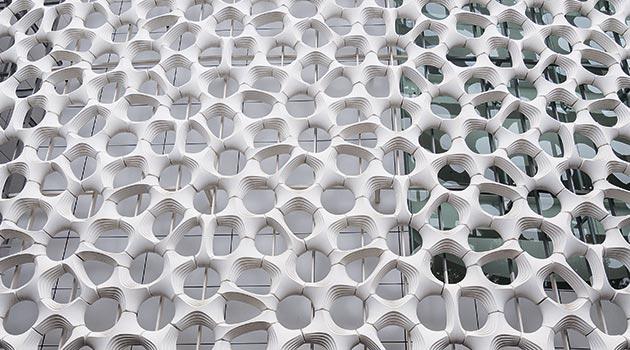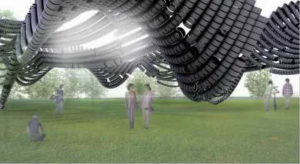A “Regenerating” Nuclear Station
|
The main goal of this thesis is to investigate the potential biological processes can bring to modern architecture in order to diminish, if not neutralize, the inevitable adverse effects mankind has caused to the environment. Currently, we are facing an energy crisis. Fossil fuels are the main sources of energy, and though it is cheap, it creates a large carbon footprint and we are past the tipping point of conventional sources of oil and gas. Although nuclear power is an attractive alternative, it potentially causes more damage than benefits due to the radioactive impacts on the health of humans and the ecosystem in case of leakage. Per research, it was found by scientists in post-nuclear sites after several months, that a type of fungi was not only able to survive the radiation emitted, but to also digest and convert it into its own body cells for growth. In light of this, we may be able to harness this radiotrophic fungus into the skin of the building in constructing nuclear stations so that the architecture can contain the radiation produced and convert the damaging radiation into supplies of food. The resulting closed loop system creates no waste as an end result. <Duncan, David Ewing. “Eating Radiation: A New Form of Energy?”MIT Technology Review, May 29, 2007. Accessed September 22, 2016. https://www.technologyreview.com/s/407974/eating-radiation-a-new-form-of-energy/.>
Fig. 1: Smogfilter – The building skin of a hospital which filters and breaks down pollutants into smaller, harmless parts. <López, Jésus. “Smogfilter.” National Geographic, December 2014. Accessed September 22, 2016. http://www.nationalgeographic.de/aktuelles/meldungen/smogfilter.> Fig. 2: Architecture as Energy Storage – Oil Killer – A project that uses human hair to absorb and retrieve oil from oil spills and transform it into an architecture. <Obuchi Lab. “Cybernetic Urbanism G30 Studio Projects.” The Obuchi Lab Blog, November 28, 2011. Accessed September 22, 2016. http://obuchi-lab.blogspot.hk/2011_11_01_archive.html.>
|


One Comment